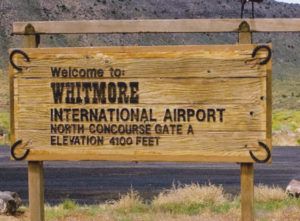
Some—perhaps even many—pilots of Experimental aircraft never operate their artfully homebuilt aircraft on any runway surface not considered “improved,” meaning asphalt or concrete. That’s certainly fine, and a lot may never desire to do so either. But that doesn’t mean they can’t. With some common sense, proper planning and following the right procedures, many homebuilts can be safely operated on a wide variety of “unimproved” surfaces.
The term unimproved can mean many things. For simplicity, I will use the term “dirt” for anything not pavement, even though it can be sand, gravel, slate, clay, tundra or grass. One of my favorites is Lopez Mateos (MTB) in Baja California, Mexico, which is primarily a surface of crushed seashells on a salt flat—even corporate aircraft use it without issue. Obviously, there are some aircraft types, like perhaps Questairs or micro-jets with their skateboard wheels, that should confine themselves solely to tarmac. Still, most aircraft have no issue getting dirty now and then with proper procedures. I will stop short of the more extreme environments like river sandbars, mountain meadows, sand dune moguls, flatbed trucks and the like that the hardcore bushmen explore in highly specialized machines with their outsized tires.
My first lessons and solo were on a dirt strip near Boise, Idaho, then called Strawberry Glenn. (Now covered in houses.) It was unique for a dirt strip in that it had dozens of resident aircraft and even an FBO with a flight school and basic services, including fuel. Such is very rare today for an unpaved strip.
My first flying job with a logo on the paycheck was at Lake Powell Air, with about half the operations on dirt strips flying river runners and tourists around Color Country. A couple, like Bar 10 Ranch in Whitmore (1Z1) in Grand Canyon, Arizona, and Goulding’s Lodge (UT25) in Monument Valley, Utah, have been paved. But to us old-timers, they lost a lot of their dirty charm in the process.
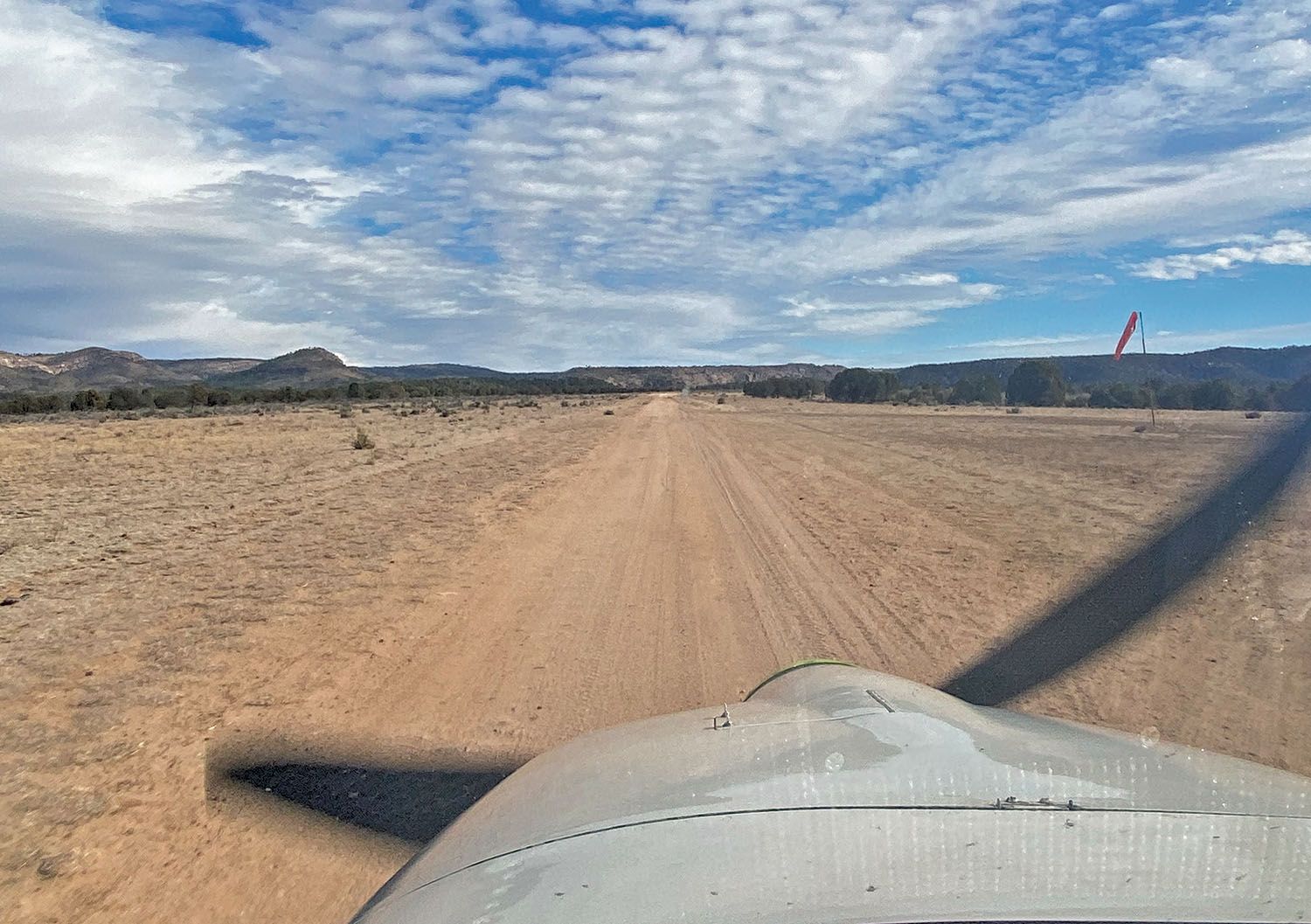
Preflight Prep
All flights require planning, but getting dirty especially does. The first issue involves insurance. Buried in the microprint of many policies is an exclusion from operating on unimproved airstrips. Through personal experience, I have learned that you can call your provider and give them the name and identification of the strip(s) you are considering and usually get a waiver of the restriction for the specific strips, especially for well known/high volume strips. It helps if there is information about the airstrip available in guides or other resources.
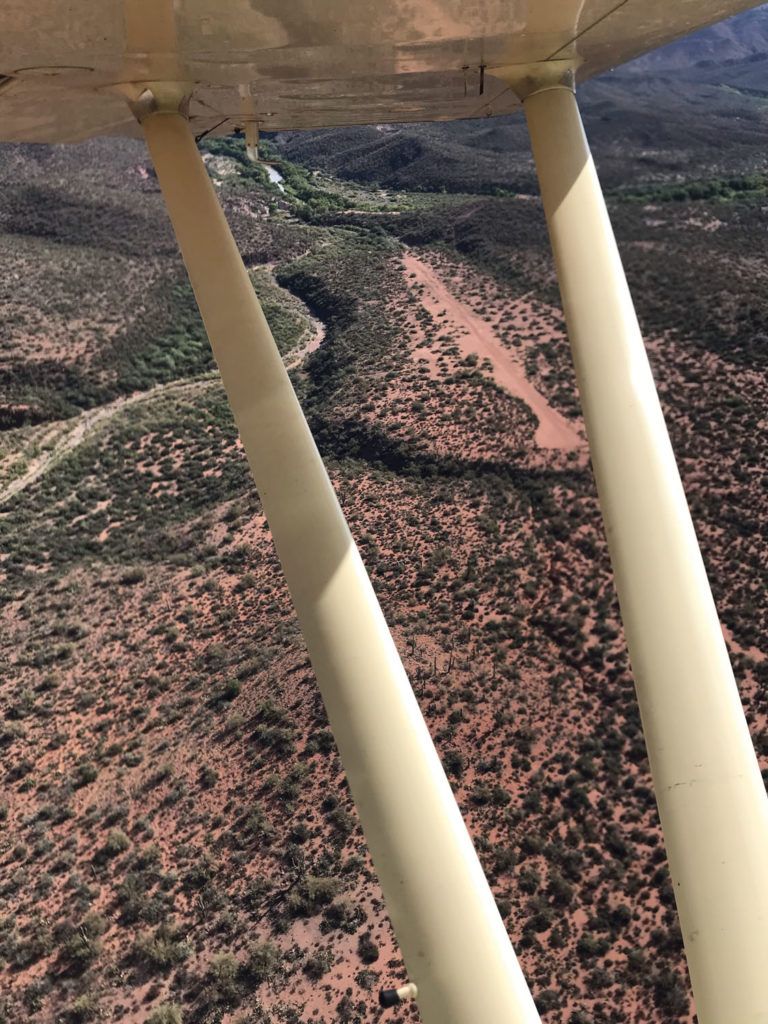
Speaking of airport guides, any strip designated for aircraft should have a helpful resource somewhere. My favorites include the “Fly” guides produced by the late Galen L. Hanselman; I own his entire set. Most states have pilot associations that are also good resources for material. These types of guides are indispensable for preflight planning. Surface, slope, alignment, length, width, surrounding terrain and nearest services are among the things to know ahead of time.
Knowing that I would enjoy getting dirty on occasion with my RV-10, I modified my build slightly to that end. I raised the wheel pants 1/2 inch higher than plan spec and sized the pants’ openings for the larger Monster retread tires that I prefer. I also treated the bottom of the pants with rubberized paint. I’m glad I made the modifications but would stop short of calling them necessary on most dirt strips. I have more than 100 operations on unimproved strips and have never had a wheel pant or tire issue. However, I wouldn’t recommend low-rider type pants with very little ground clearance that some builders prefer. One option is to remove the pants and gear-leg fairings. I have even seen custom brackets that allow removing the pants but retaining the leg fairings on some Van’s designs. Some people use anti-ding tape on the prop and horizontal-stabilizer leading edges. I wouldn’t suggest that without first discussing it with the respective designer/manufacturer.
Since most dirt strips are also back-country strips (at least those that are the most fun), additional planning is required. I cannot stress enough to never venture off on your own, either as a solo person or a single ship. More people and aircraft mean more chances for assistance in case of an issue. It is always a good idea to have enough extra seats among the fleet to airlift stranded passengers out if one aircraft becomes unairworthy. You can also divide up tools and supplies to have a wider array.
Speaking of tools, I have two road kits that I carry in my airplane. A light one when flying to full-service airports, and a more complete one when getting dirty. Having spark plugs, relays, belts, jumper cables, an air pump or mini compressor, tie-down stakes and cables—even a spare tire and tube and the necessities to change them—can be the difference between a headache and a nightmare. Some quick-setting epoxy and fiberglass tape can be handy if a wheel pant gets damaged. Duct tape has amazing uses. A lightweight manual tow bar is a necessity. Don’t even consider launching with things like weak batteries, balding tires or nagging mechanical issues.
Some necessary provisions like food, water and weather-appropriate clothing are a must. A planned hour-long stop can turn into days—and an overnight into much longer. Careful fuel planning is also a significant consideration in the eternal tradeoff of weight vs. range. If you insist on ignoring conventional wisdom and going solo, make sure you leave a detailed flight plan and timetable with someone responsible, which is a sound idea regardless.
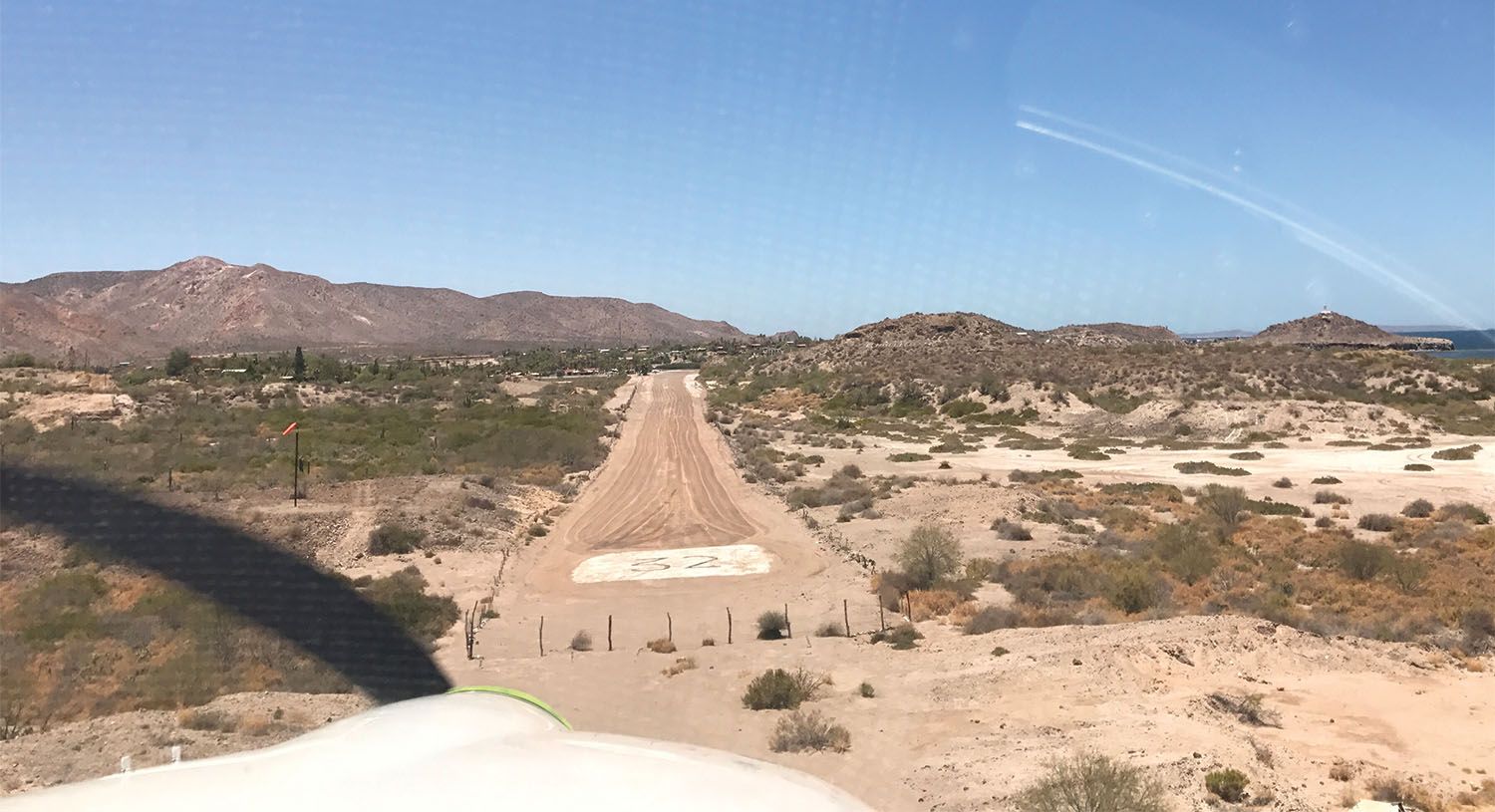
A Dirty Arrival
Arriving at a dirt-strip destination requires the same skills and practices as any paved runway—and then some. If in a group, maintain wide separation and have the most experienced pilot go first. Fly proper patterns if possible and always make proper radio calls. Most strips have some sort of wind indicator, but there are several other ways to determine conditions if not. Blowing dust or smoke, ripples on water, even cloud shadows on the ground can be helpful. Just be mindful of slope or other restrictions that dictate landing one way and departing the other almost regardless of wind. Fly the airplane first and scan out the window second. There is wisdom in flying over the runway first to check for conditions, wildlife, obstructions, and so on.
Dirt runways can be wide or narrow, long or short, but I’ve never seen one with centerline markings. That won’t bother most pilots if they don’t think about it, but it will bother some pilots if they do think about it. It’s like your first time with a stick instead of a yoke. If you think you might be bothered, go practice somewhere with an instructor first.
Touch down on speed at the appropriate target point and be ready to go around if that isn’t happening. The good news is that most aircraft on most dirt strips will stop shorter than on pavement. Experienced dirt pilots will often never have to touch the brakes as they skillfully manage their energy to take them to the parking area. Once securely on the ground and decelerating nicely, get the stick back as far as you can.
A common rookie mistake is to get too slow or stopped too early and then having to use a bunch of power to get to the parking area. The absolute worst thing (next to going off the end) is using a bunch of power as you move slowly or are stopped. That’s when you’ll hear the tick tick tick of money flying out of your wallet. (More on that later.) The absolute best way to park is well clear of the runway, pointed slightly downhill in the direction that you will be departing. A bonus is if you can coast the last few feet. If in doubt, once clear of the runway, just shut down and plan on manually towing the airplane to a parking spot. If the runway was muddy or slushy, don’t raise the flaps until they’ve been inspected for contamination. If you’re in a group and first to arrive, make sure you give a detailed report of conditions over the com frequency to those still coming in.

Dirty Parking, Dirty Departure
If heavy braking was used, use caution in parking on dry weeds or grass because your brakes may be hot and set the scenery ablaze. Some strips have tie-downs, but most don’t. Auger stakes and ratchet straps are good to have, and securing the aircraft well is essential when staying overnight or even just leaving the airplane unattended. Pitot covers and inlet plugs are important, too. Experienced pilots will sometimes take non-residue painter’s tape to cover gaps in cowls, doors and other openings to reduce dust penetration. Make sure to clear the static ports before departure.
Most of the same considerations and skills for a dirt arrival will apply to a dirt departure. The obvious exception is that any conditions that produce a shorter stopping distance will likewise produce a longer takeoff roll unless also affected by wind or runway slope.
First, some prop talk. Low-pressure areas behind spinning prop blades create vortices near the ground. The strength of those vortices and their ability to suck up debris into your prop and damage it are directly related to three factors, which all play a role: the speed of the prop, the distance between the bottom of the arc and the dirt and the forward speed of that prop arc. Your goals are minimum prop speed, maximize height (keep the stick back and don’t taxi over berms or piles) and not sitting static or creeping along slowly, which increases exposure time.
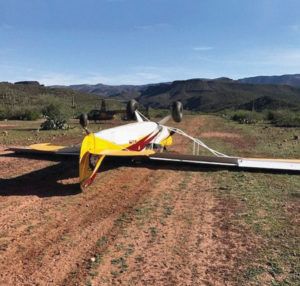
Protecting your airplane starts as you walk up to it. If you can manually point it in the direction you want to taxi or have it pointed slightly downhill, go for it. Then remove any stones or dirt clods at least 10–15 feet ahead of your propeller arc and 1–2 feet to either side of your taxi path. If on a surface soft enough to leave footprints, take your tow bar and pull the aircraft forward about 10 feet and then push it back. The idea is to make smoother channels so that minimum breakaway power is needed to start rolling. Don’t do this if conditions like wet sod could cause deep ruts. Experienced snow pilots will sometimes taxi the length of the runway, do a 180, taxi back the length of the runway, do another 180—and then take off in their tracks for less drag.
Do an especially conscientious preflight with attention to proper tire pressure and ensuring that the pitot tube and static ports are clear of debris. Once in the aircraft, if oil temperature isn’t going to be an issue, do as many setup tasks as possible before starting since you don’t want to idle in place.
Think about the best departure direction for conditions and how to get to the runway. If the runway is narrow and you have to back taxi and then do a 180, plan on shutting down at the end and manually repositioning the aircraft, especially in aircraft that use differential braking for steering—they can require lots of power to do a tight 180 on soft surfaces.
Experienced dirt jocks will often do a rolling mag check, but don’t try it if struggling with distraction or control. Trim for a normal takeoff, but use the soft-field technique with the stick all the way back until rotation. If runway length allows, advance the throttle slowly to have good forward motion prior to coming to takeoff power.
Upon arrival back home, thoroughly clean and inspect the aircraft, especially inside the wheel pants if applicable. Check your prop carefully and dress it accordingly if needed. Dirt flying is not for everyone but can be a wonderful way to enjoy the airplane you spent years building.


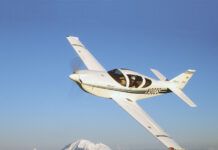




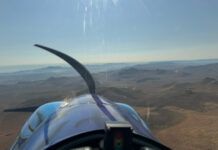


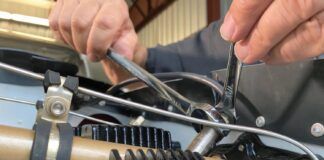
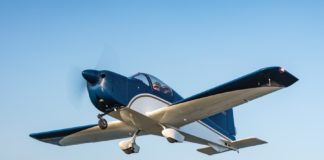
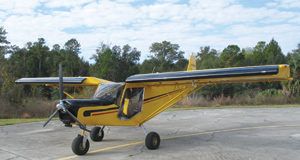
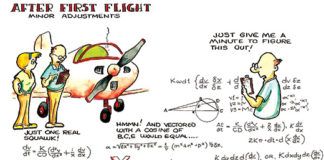
I was reading your articles and noticed the Superstitions in a picture of your RV. Being the husband of a retired FA from SWA, I showed your picture to her and she said she remembered you. She is the ‘short’ Luann 7121 flying out of PHX since the base opened in ’86. She retired in 2014. I’ve been an aviation fan since the seventies, EAA member #310479. I’ve enjoyed reading your articles.
Thank you for being a reader of the magazine and for reaching out. I appreciate your kind comments.
As always, a great job Myron !
Agree, having built a 7 I have a great story for airplane builders ii started at age 58 got my ticket at age 60 i have flown over 3000 hrs on tail draggers floats which i assemble myself and also on skies that i built i am now 87 and had to quit to take care of my spouse – she has dementia but my story would be great for young guys thinking of building and flying.
Decomposed granite is what we hikers around the Prescott, AZ area dread going up and down slopes on. It’s pretty slippery. A geologist explained to a group of us hiking around Watson Lake that the granite in Granite Mountain and the Granite Dells is 1.4 billion years old, and it’s very unhappy here at surface temperatures and pressures. He said if you cut into a boulder of that stuff, you’ll find it’s weathered 4-6″ in. It turns to sand on the trails under light to moderate foot traffic.
Excellent article Myron. You have been a great dirt flying and Mexico flying mentor for me. See you in Mulege!